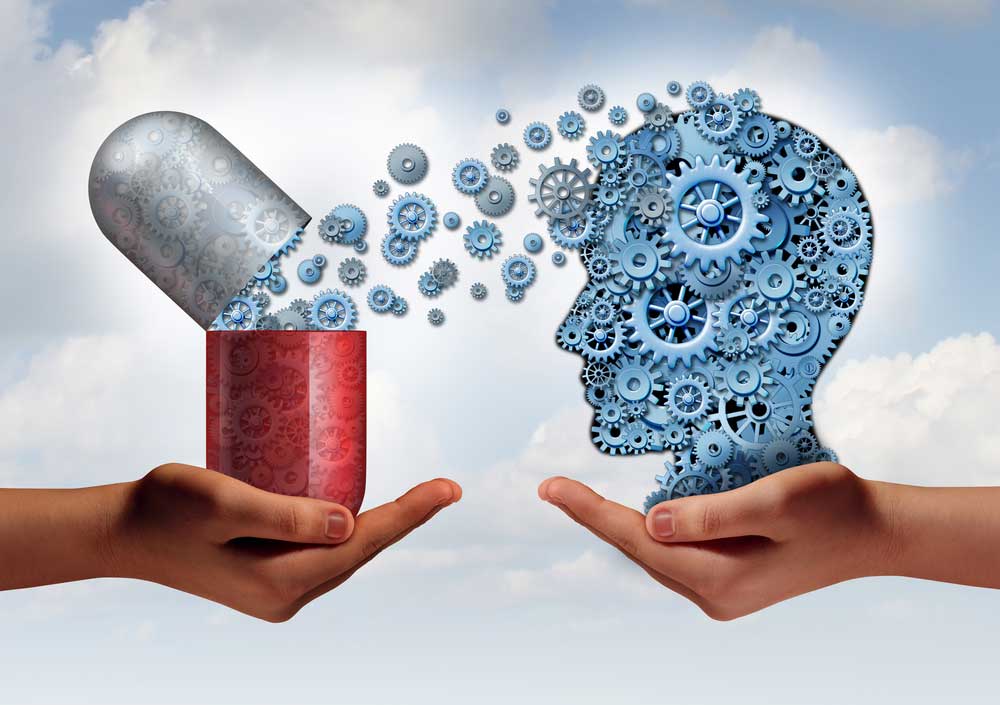Read the latest and greatest from our team
of incredible specialists.

Beach House Recovery Center » Blog » This Is What Drugs and Alcohol Are Doing to Your Brain
As any addict knows, drugs and alcohol are hard on your body and mind. You may feel good when you’re getting high, but otherwise, your body feels tired, sick and downright abused. The part of your body most affected by drugs and alcohol is your brain. Alcohol and drug abuse can actually change the structure of your brain and how it works.
The human brain is the most complex organ in your body. From eating to breathing to talking, it controls everything you do. Your brain also plays a huge role in addiction to alcohol and drugs.
To help you understand the role your brain plays in addiction, here’s a quick lesson on how the brain works. Your brain is made up of many sections that work together. The areas most affected by drug and alcohol use and abuse include the following:

The cerebral cortex is the part of your brain that helps you think and make decisions.
The brain stem controls bodily functions that help keep you alive, such as your breathing, heart rate and sleeping patterns.
The limbic system is the part of the brain that regulates your emotions and helps you feel pleasure. In non-addicts, the limbic system responds to pleasurable activities such as socializing and eating. Drugs and alcohol also stimulate the limbic system, and to a much greater degree than healthy pleasurable activities do.
To understand addiction, it’s also important to know how the different parts of the brain communicate with each other. Brain parts communicate through networks called nerves. Here are some of the specific players in brain communication:
Neurotransmitters are chemical messengers in the brain. They are critical players in the addiction process.
Neurons are cells in the nervous system that send messages in the brain through chemical and electronic signals.
Receptors are the brain’s chemical receivers.
Synapses are the spaces between neurons in the brain.
Transporters act as the brain’s recyclers. They bring neurotransmitters back into neurons and shut down messages.
To send a message, a neuron releases a neurotransmitter into the synapse. The neurotransmitter crosses the synapse and attaches to receptors on the receiving neuron.
With those brain basics in mind, it’s important to understand that drugs and alcohol affect the brain by tapping into this communication system. They do this in several ways. First, drugs and alcohol interfere with the way neurons send and receive information. For example, both marijuana and heroin have chemical structures that mimic neurotransmitters. This allows them to activate neurons. But because these drugs do not act exactly the same way natural neurotransmitters do, they cause the network to send abnormal messages in the brain.
Other drugs work differently. Cocaine and amphetamines like crystal meth stimulate neurons to release abnormally high levels of neurotransmitters. These drugs can also prevent those neurotransmitters from being recycled as they normally would. This increase in neurotransmitters disrupts brain communication.
The reason people enjoy using drugs and alcohol and continue to do so despite negative consequences is the pleasurable feelings drugs and alcohol yield. Because drugs and alcohol create surges in the feel-good neurotransmitter dopamine, they produce euphoria—the “high” people try to recreate again and again. Not only does dopamine create feelings of pleasure, it also plays a role in learning and memory, which helps in the transition from liking drugs and alcohol to becoming addicted.
As researchers learn more about the science of addiction, they have uncovered another important neurotransmitter in the process—glutamate. Dopamine and glutamate seem to work together to control the area of the brain associated with reward-related learning.
The problem is, the high drugs and alcohol produce is stronger than the natural pleasurable feelings we get from everyday activities like eating and sex. In fact, some drugs can produce two to 10 times the amount of dopamine natural rewards do. As the addiction takes hold, a person who abuses drugs or alcohol begins to feel lifeless, flat and depressed. The only thing that can bring them pleasure is the substance to which they are addicted. The person may also need to take more and more of the drugs or alcohol to get the desired effects; in other words, he or she builds a tolerance.
Damage from drug abuse is not isolated to just the brain. For more information, learn the long term effects of drug abuse on the body.
For all of the above scientific reasons, addiction is a very powerful disease. The good news is, addiction is treatable. If you or a loved one is struggling with addiction, treatment at a reputable recovery center can help set you free.
Save
Whether you’re researching for yourself or a loved one, Beach House can help. We understand that this is a serious time in your life and that the treatment center you choose matters. We want you to feel comfortable and empowered to make the right decision for yourself, a friend, or a family member. This is why a counselor is waiting and available to answer your questions and help put your mind at ease regarding the next steps. Many of the staff at Beach House have walked in your shoes. If you feel you’re ready or want more information about how to help a loved one, we can help today. You can also learn why we are voted the #1 rehab for addiction treatment in Florida.





"*" indicates required fields